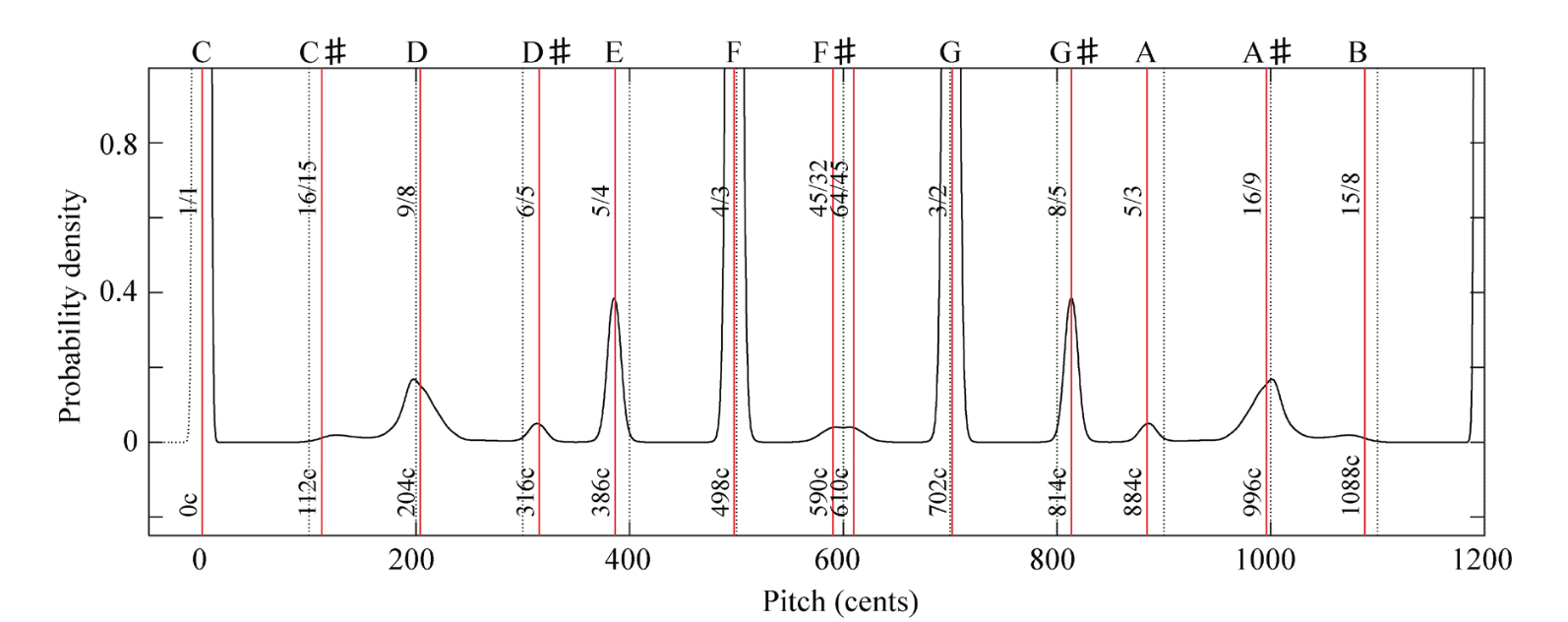Alex Cooke
Research
Featured Music Research
Crystals of Sound: Applying the Physics of Phase Transitions to Musical Intonation
This interdisciplinary research, conducted in collaboration with Ryan Buchele and Jesse Berezovsky from Case Western Reserve University, explores a novel physics-based model for understanding musical tuning systems. Published in Empirical Musicology Review in 2025, the study applies statistical mechanics principles—specifically the same mathematical tools used to describe phase transitions in matter—to explain how musical intonation systems have evolved throughout history. By modeling the trade-off between minimizing dissonance and maximizing compositional variety as analogous to the balance between energy minimization and entropy maximization in physical systems, we demonstrate how a single "temperature" parameter can generate tuning systems that closely match historical progressions from just intonation through meantone temperaments to equal temperament.
The research validates this theoretical framework against a corpus of 9,620 musical pieces spanning 1568-1968, showing that compositional trends toward increased modulation and chromaticism mirror the model's predictions as "temperature" increases. Beyond explaining existing tuning systems, the model reveals potential for discovering new intonation systems by adjusting parameters such as critical bandwidth and harmonic content, successfully predicting alternative systems like 31-tone equal temperament and non-Western scales. This work, supported by an $11,000 Emerging Horizons Initiative grant from Case Western Reserve University and Cleveland Institute of Music, represents a significant contribution to both musicology and interdisciplinary research, offering fresh insights into why certain tuning systems emerged and providing tools for exploring future musical possibilities. It further resulted in new compositional tools and a full concert given at the Cleveland Institute of Music, which included audience control of the physics model and music generation.
View Published Article
The research validates this theoretical framework against a corpus of 9,620 musical pieces spanning 1568-1968, showing that compositional trends toward increased modulation and chromaticism mirror the model's predictions as "temperature" increases. Beyond explaining existing tuning systems, the model reveals potential for discovering new intonation systems by adjusting parameters such as critical bandwidth and harmonic content, successfully predicting alternative systems like 31-tone equal temperament and non-Western scales. This work, supported by an $11,000 Emerging Horizons Initiative grant from Case Western Reserve University and Cleveland Institute of Music, represents a significant contribution to both musicology and interdisciplinary research, offering fresh insights into why certain tuning systems emerged and providing tools for exploring future musical possibilities. It further resulted in new compositional tools and a full concert given at the Cleveland Institute of Music, which included audience control of the physics model and music generation.
